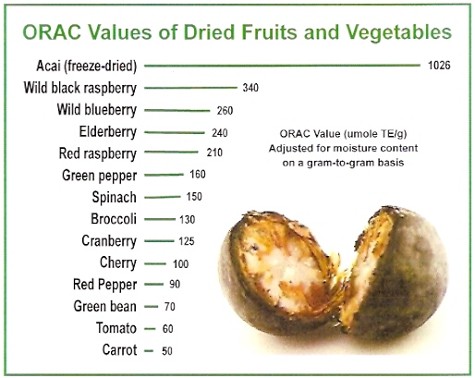What Does Orac Mean
 You'll often notice how many anti-aging longevity products and skin creams and serums all quote the ORAC value of their particular product as a means of measuring the strength it poses.
You'll often notice how many anti-aging longevity products and skin creams and serums all quote the ORAC value of their particular product as a means of measuring the strength it poses.
ORAC stands for Oxygen Radical Absorbance Capacity,
and is used to measure the antioxidant capacities in a biological
sample. Many foods are now tested using this methodology, which
various berries, vegetables and fruits, most notably acai and resveratrol ranked highly.
It's the correlation between the powerful anti-oxidant capacity and
positive impact of fruit and vegetable diets which is argued to play an
important role in the free-radical theory of aging.
In a study carried out by USDA data on foods with high ORAC scores, the
United States Department of Agriculture published an updated list of
ORAC scores for 277 foods commonly consumed by U.S. citizens, these
being seeds, spices, fruits, vegetables, nuts and grains.
Acai and resveratrol were obviously not included in this study as they
wouldn't appear within the staple diet of the average American but the
ORAC values of both these 2 anti-oxidants do compare favorably.
The top three USDA foods with the highest antioxidant capacity per serving size included ground cinnamon - 61000, the Aronia black chokeberry - 16062 and the Small Red Bean - 13727.
The Acai fruits ORAC value is listed as 5400, much lower than the top foods listed in the USDA journal, but it
is the freeze dried Acai Berry powder which claims to deliver an ORAC score of 35000, which makes it second only to ground cinnamon.
The common myth is that a fruit will essentially have a richer ORAC
score than the freeze dried pulp, but this is where manufactures argue
that there products are formulated with such high concentrations, so as
to radically increase their ORAC levels.
If this is the case
then both acai and resveratrol - which delivers an anti-oxidant score
of approximately 27'000 - suggest these two new anti-aging products
could well prove their worth in weight.


